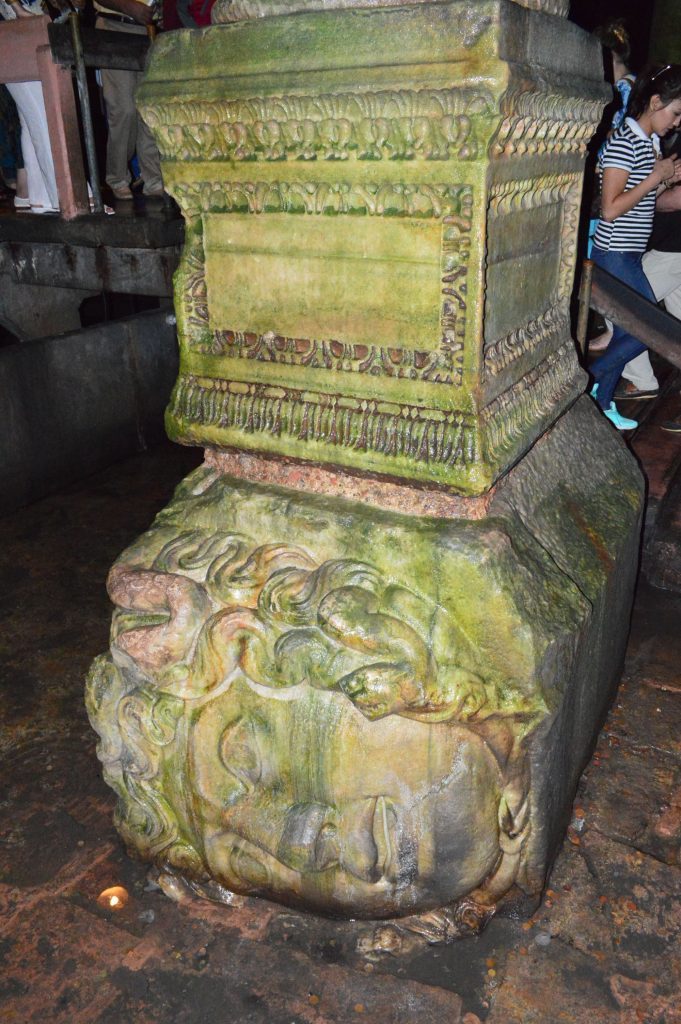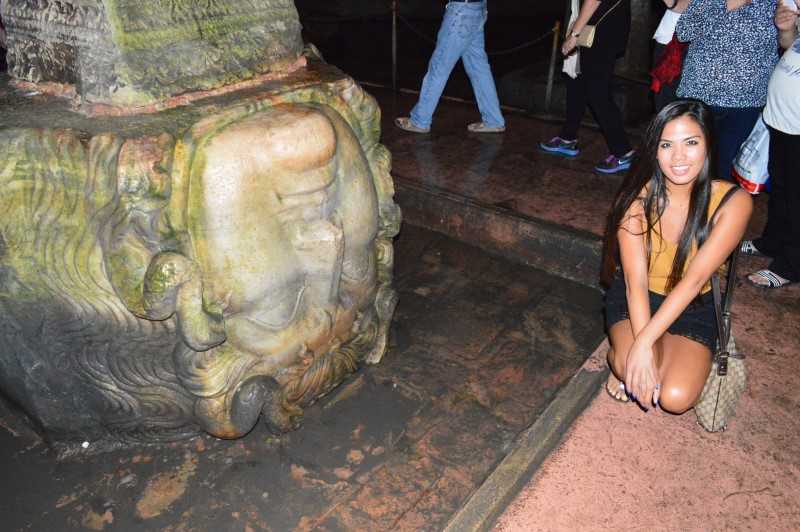The Basilica Cistern is a major underground tourist attraction in Istanbul, Turkey. Additionally, it is ideally located adjacent to other popular attractions on the “European” side of Istanbul. Therefore, it is easily accessible from around the city. As a result, on a hot day it can provide some much needed shade inside a unique subterranean atmosphere.
History of Basilica Cistern
The Byzantine Emperor Justinian initiated construction of the cistern in the 6th century. Previously, a great basilica was situated at this location, hence the name “Basilica Cistern”. Ancient texts describe the former basilica as facing the Hagia Sophia and it featured lush gardens and a colonnade.
After completion it served as the fresh water supply for the “Great Palace of Constantinople”. However, it continued to serve as a valuable water source for many centuries. In fact, the succeeding Ottoman Empire made use of it well into the 19th century.
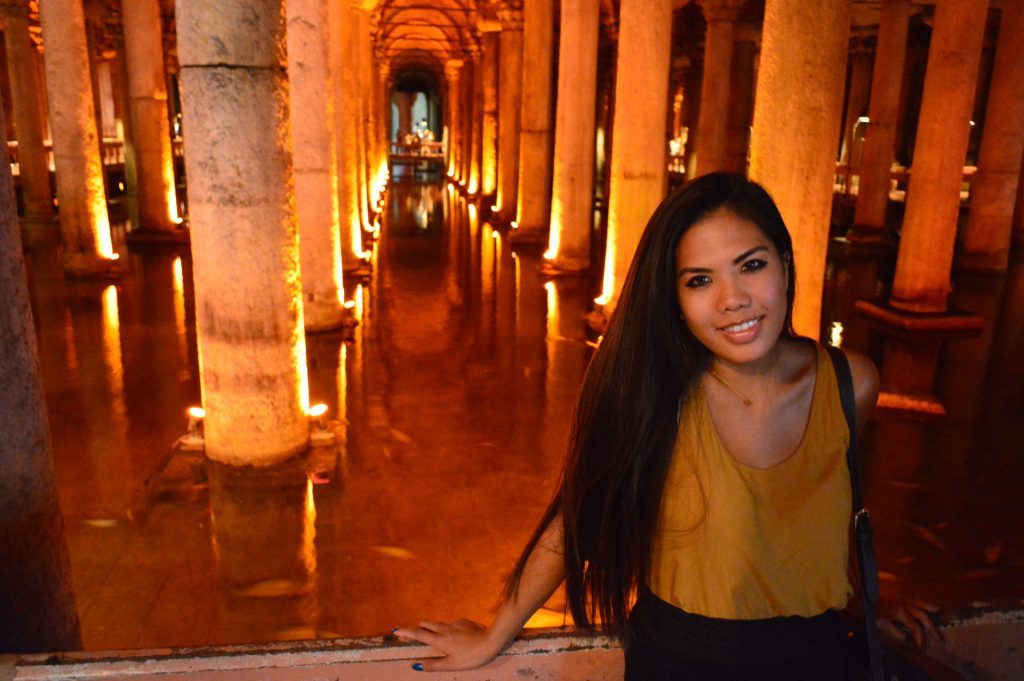
Important Constantinople Water Source
A cistern is essentially an underground storage chamber for water. Indeed, Basilica Cistern was an important fresh water source that supplied ancient Constantinople (Istanbul). As a result, there were many cisterns located in the city.
The water supply came from the Belgrade Forest which was then located 19 kilometers outside the city center. Additionally, the famous Roman aqueducts provided transportation of the water to the city. Furthermore, the underground chamber can store up to 100,000 tons of fresh water at one time.
In modern times, the cistern only contains a few feet of water at the bottom. However, the resulting subterranean ambience creates great photo opportunities. Additionally, the color of the lighting is well adjusted. As a result, the water inside the Basilica Cistern has a special red coloration and visual affect of the columns is amplified.
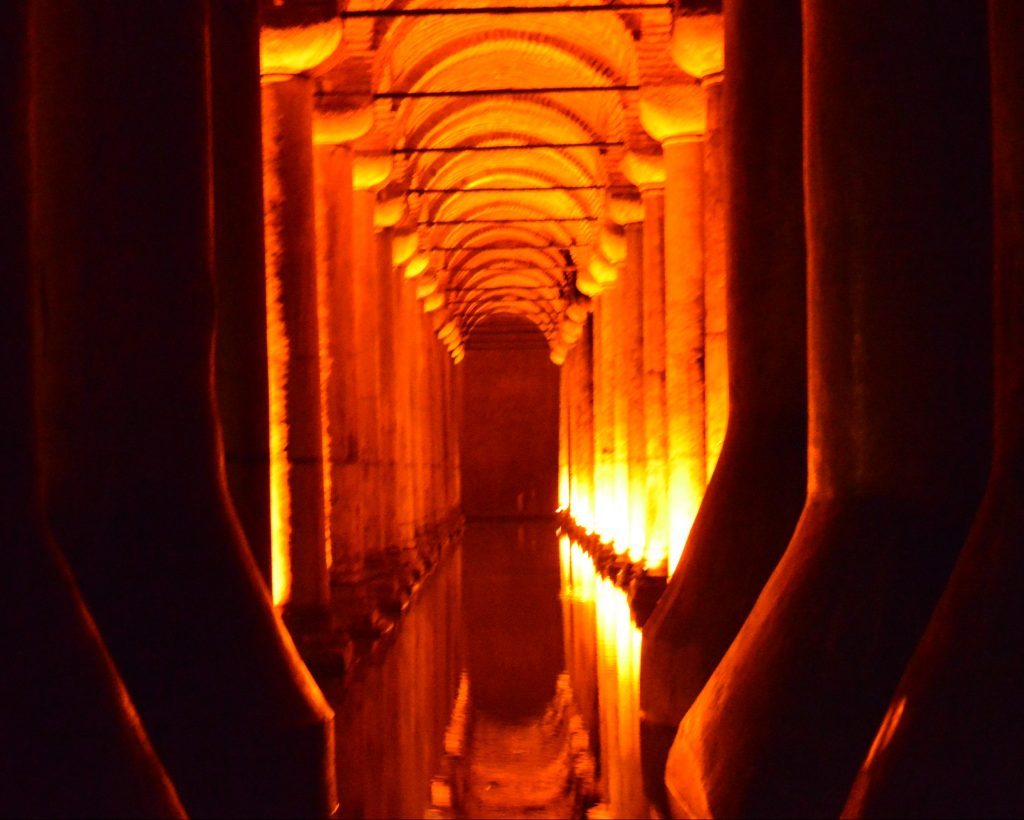
The main architectural features of the Basilica Cistern are the 136 pillars. Additionally, each pillar is composed of granite or marble and they were brought to Constantinople from locations throughout the Roman Empire.
Furthermore, the carving styles mainly consist of Ionic and Corinthian designs. One of the cistern’s columns features carvings of tears which historians believe are a tribute to the hundreds of slaves who gave their lives during construction.
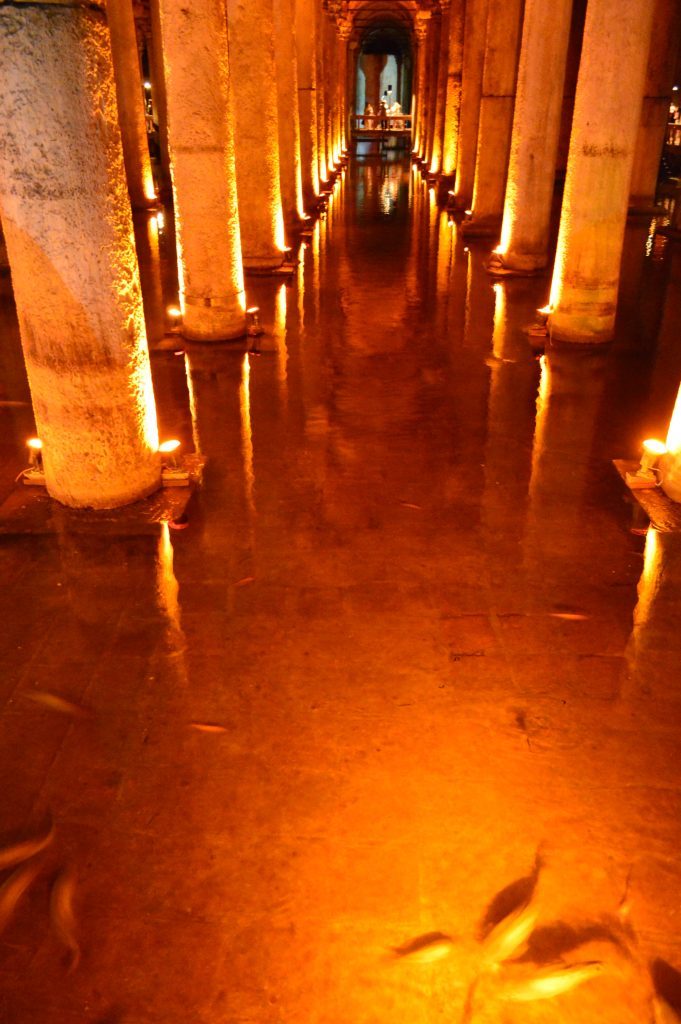
Medusa Sculptures
There are two pillars that use the head of Medusa for their base. As a result, these special Medusa pillars are of special interest to historians and visitors alike. The head of Medusa is upside down under one pillar and situated sideways under the other.
Why? Perhaps, it was merely a matter of convenience. However, many believe that ancient superstition is the reason. Indeed, Medusa was a fearsome Gorgon with hair composed of snakes. Additionally, she would turn those who gazed at her into stone.

However, 30 feet of water submerged the heads. Perhaps inhabitants of ancient Constantinople believed the heads would protect the water supply from sabotage. Either way, they create great photo opportunities.
